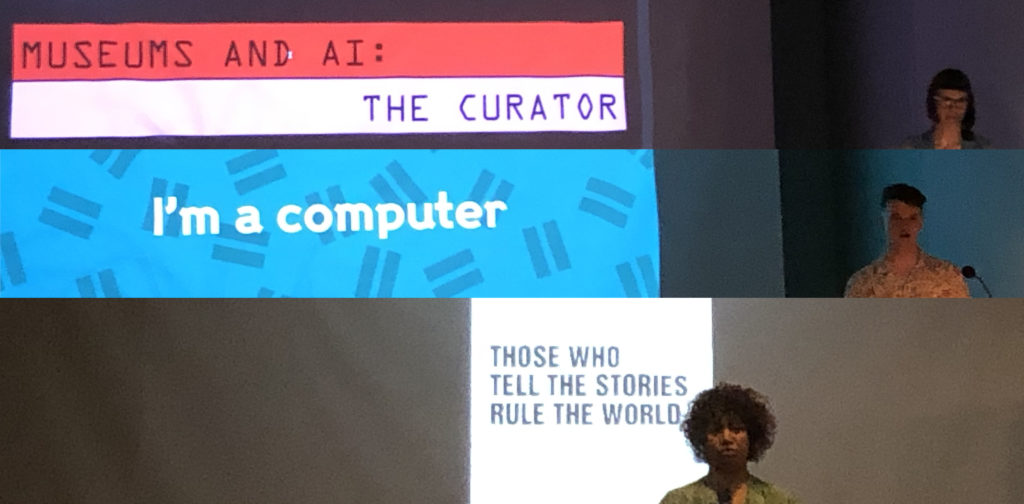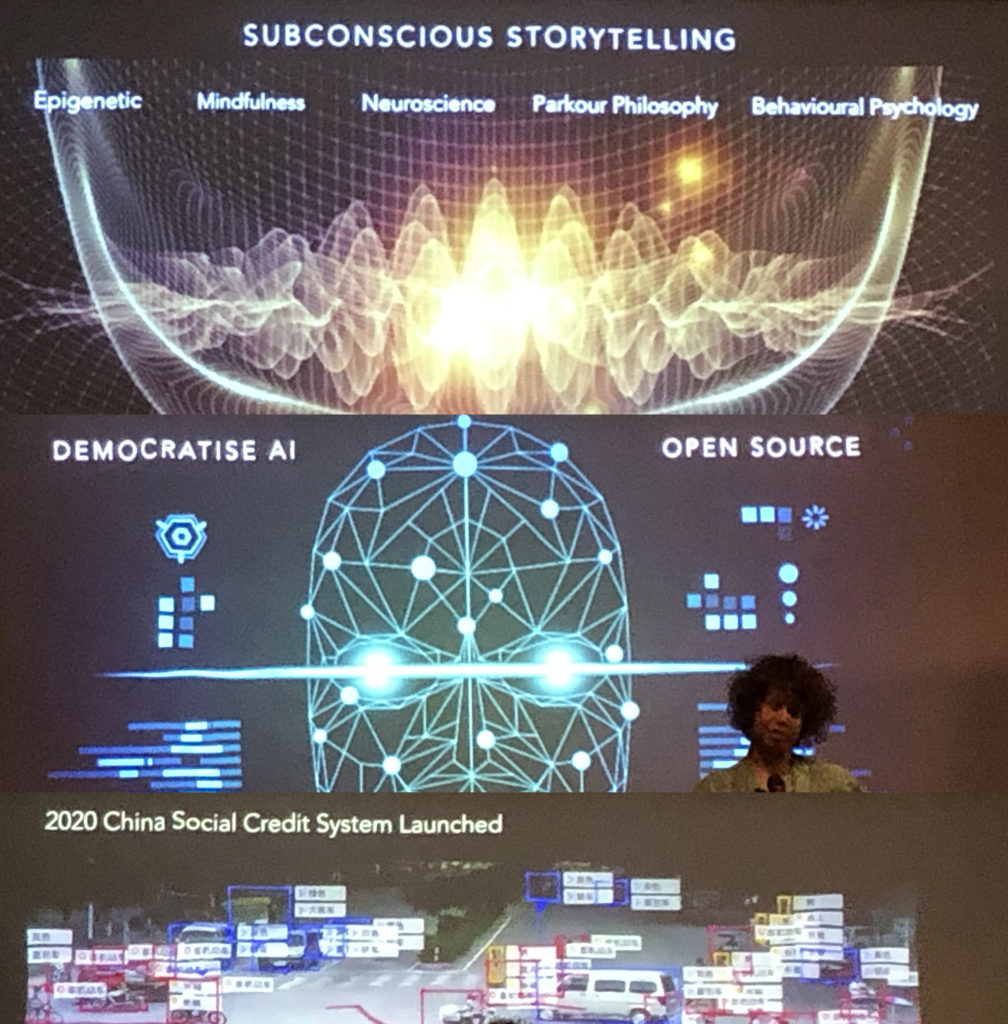The event taken place at Cooper Hewitt, Smithsonian Design Museum on Sep 16, 2019 mainly discussed the applications of Artificial Intelligence now and future and highlighted the role of museums as making people more self-aware. There were three talks in the event given by three different perspectives (a curator, a computer and a future teller) and a free Q & A session afterwards.
Curator: Andrea Lipps, an associate curator of Contemporary Design, Cooper Hewitt
The talk given by a curator from Cooper Hewitt first discussed the impact of AI on our lives right now. As is known to all that AI could be used in different kinds of fields like education, recreation, medical treatment, marketing automation, etc. AI could analyze large amounts of data in a short period of time and help make quick decisions. The benefits of AI are undoubted and visible. However, the curator also pointed out some questions that could not be ignored:
1.How can we ensure diversity, inclusion, safety and human rights are maintained with AI?
2.What role would AI play in our future?
3.How could museum use AI to represent new things?
There is no right or wrong to these questions and we could interpret the questions from different angles. The curator also provided some frameworks that we could use to think about AI:
1.Is it active or passive? If it is active, do you have a choice? If it is passive, is it being disclosed?
2.Is it being linked to a real-world identity or just used as anonymous ID?
3.Which methods being used when connecting AI with museums?
It’s true that we could only predict the influence and applications of AI in the future but what we should pay attention to right now are our own values and priorities. Because the use of AI is designed by human beings and design is just the externalization of our own desire. “If we use, to achieve our purposes, a mechanical agency with whose operation we cannot efficiently interfere once we have started it… we had better be quite sure that the purpose put into the machine is the purpose which we really desire.” Said Norbert Weiner in 1960.
Computer: Harrison Pim, a Data Scientist from Wellcome Trust
The data scientist who represented a computer talked about his work content, that he used machine learning in dealing with loads of images, texts and collections quickly but not analyzing users or visitors, since AI in current period was parasitic on data. He also pointed out that AI was not designed to replace human beings but as tools to be used by people. So, the main point is how to use the tools to better serve people’s needs. The talk given by “the computer” reminded me of what I read in What is Computer Ethics: we are in a conceptional vacuum and policy vacuum world and we need to reexamine the regulations in the past world, from how to define tech-based concepts to create a relatively neutral algorithm. It is impossible to create something absolutely neutral but by creating diversity, the “fundamental vulnerability” could somewhat be relieved.
Creator: Karen Palmer, a storyteller from the future
The future teller first warned everyone that the technology would take over everything and individuals would find themselves lack privacy or security in the near future if we did nothing. We would be derived of the right of telling our own stories and the world was going to be consist of auto-self surveillance, weaponized technology and biased networks.
She used the example of criminal justice system to confirm us that bias would be the biggest problem in AI applications. An example used to support was the UK police using AI to inform custodial decisions which could be discriminating against the poor. Most assumptions made by AI right now were based on false theory while these assumptions are trend to take over our lives. Thus, she concluded that democratizing AI should be what we fight for in the near future.
What she highlighted was the necessary to turn the information age to an age of perception. “Those who tell the stories rule the world.” What museums should do is to make people more self-aware and create more opportunities to arouse citizens’ insights to social issues.
Q & A session
Q: How to apply machine learning in the field of design?
A: To begin with, the interactions between users and products would be changed by new technologies but the role of designers should not be overshadowed by AI. We could use AI to produce products or test prototypes faster. In a word machine learning should serve us but we should not be slaved by it.
Q: What would justice be like in the future and what is the role of machine learning in it?
A: Neither machine learning or artificial intelligence could answer future justice problems. Those concepts should be determined by human beings but not computer technologies. What would happen in the future is the living space AI help to create and people could better understand culture issues in the museums.
Conclusion
Though we have to admit human’s dominant role in the applications of AI, there are other problems about surveillance, power and constraints that could not be ignored. “In an era of extractivism, the real value of that data is controlled and exploited by the very few at the top of the pyramid.” Said Crawford & Joler. The event did not predict how the regulations could be established but just pointed out museums’ future role in arousing people’s awareness, which I think lack enough support and overly optimistic to some extent. Anyway emphasizing museums’ social responsibility is quite necessary right now and all museum practitioners should be prepared for the transformation of exhibition modes.
Reference
Norbert Weiner (1960), Some Moral and Technical Consequences of Automation;https://www.lesswrong.com/posts/2rWfmahhqASnFcYLr/norbert-wiener-s-paper-some-moral-and-technical-consequences
James H. Moor (1985), What is Computer Ethics? 1-2
Tarleton Gillespie (2014), The Relevance of Algorithms, 191; https://www.microsoft.com/en-us/research/wp-content/uploads/2014/01/Gillespie_2014_The-Relevance-of-Algorithms.pdf
Crawford & Joler (2018), Anatomy of AI system; http://www.anatomyof.ai

